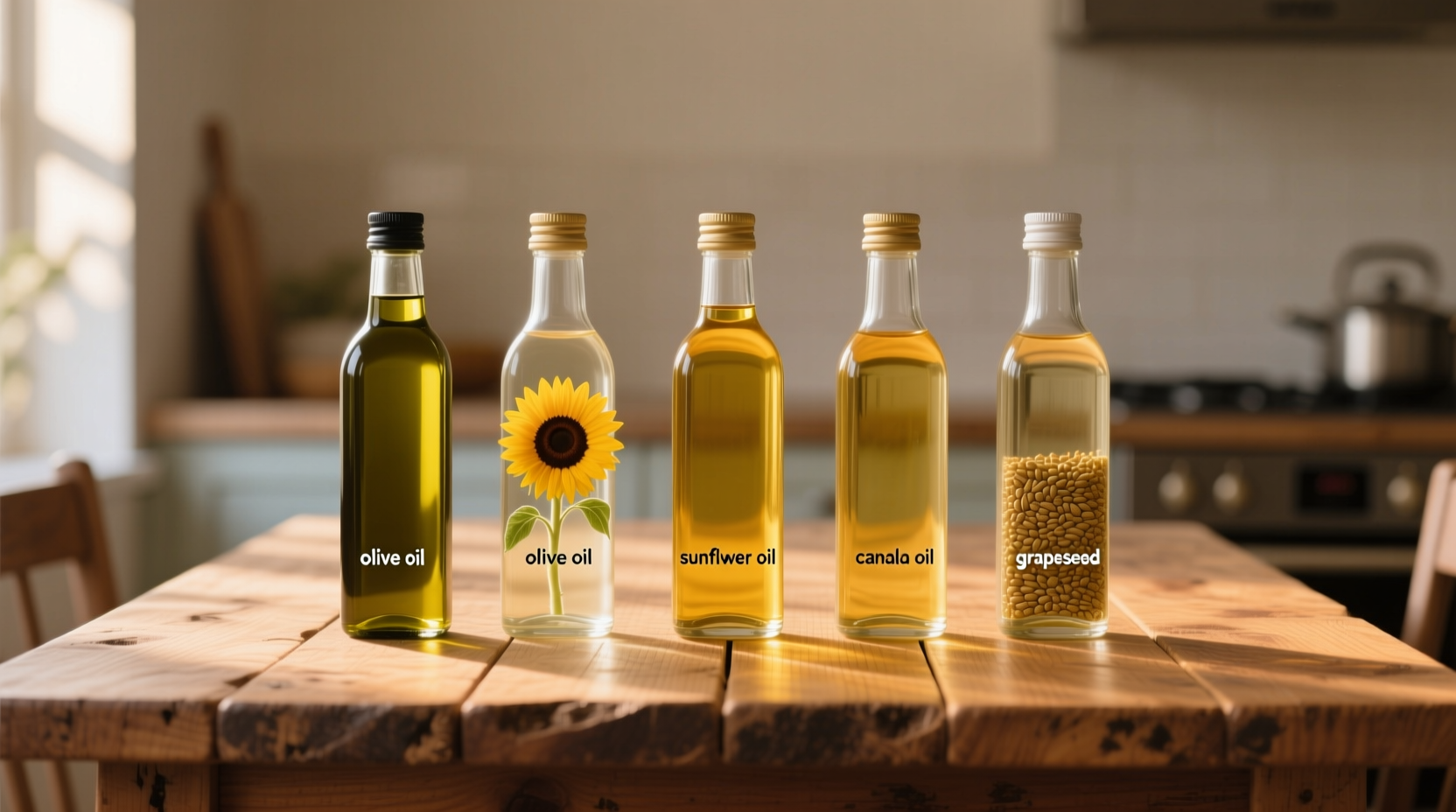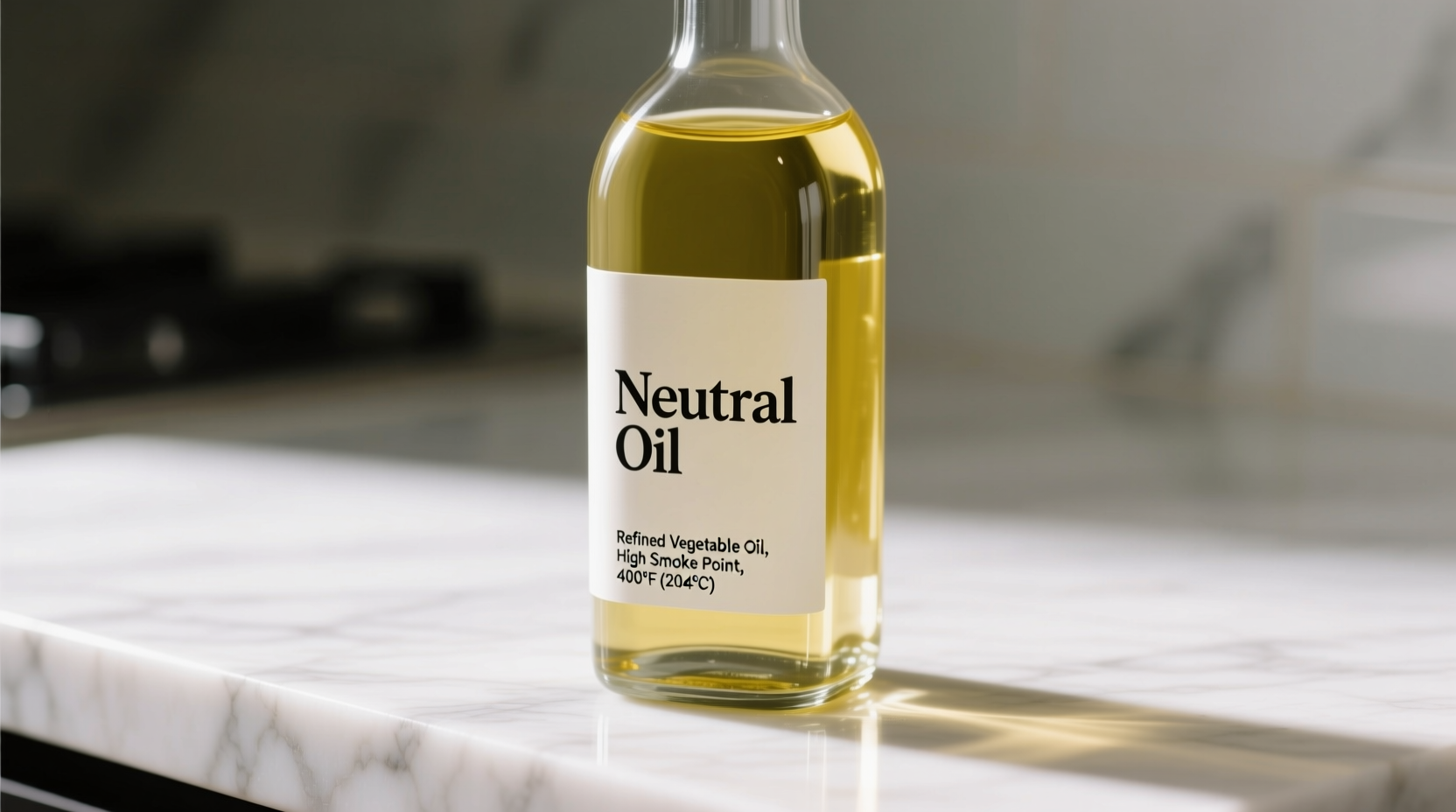Why Neutral Oils Matter in Your Kitchen
When you're searching for what is neutral oil for cooking, you're really asking how to select the right fat that won't interfere with your dish's intended flavor profile. As a culinary professional with experience across Michelin-starred kitchens and everyday home cooking, I've seen how the right oil choice makes or breaks recipes. Neutral oils serve as invisible workhorses in your pantry—they provide the necessary fat content without adding their own distinctive taste.
The Science Behind Neutral Oils
Neutral oils undergo refining processes that remove natural compounds responsible for flavor, color, and lower smoke points. According to the USDA Food Safety and Inspection Service, refining eliminates free fatty acids, pigments, and volatile compounds through processes like degumming, neutralization, bleaching, and deodorization.
"The key characteristic of a truly neutral oil is its high proportion of monounsaturated and polyunsaturated fats with minimal saturated fats," explains Dr. Sarah Callahan, food scientist at Cornell University's Food Science Department. "This chemical composition contributes to both neutrality and higher smoke points."

Neutral Oils Comparison: What You Need to Know
| Oil Type | Smoke Point (°F) | Fat Composition | Best Culinary Uses |
|---|---|---|---|
| Refined Avocado | 520°F (271°C) | 71% monounsaturated | High-heat searing, grilling, roasting |
| Grapeseed | 420°F (216°C) | 68% polyunsaturated | Stir-frying, baking, mayonnaise |
| Canola | 400°F (204°C) | 62% monounsaturated | General frying, baking, dressings |
| Refined Sunflower | 440°F (227°C) | 82% polyunsaturated | Deep frying, sautéing |
| Peanut | 450°F (232°C) | 48% monounsaturated | Asian cooking, deep frying |
When Neutral Oils Shine: Practical Applications
Understanding what makes an oil neutral for cooking becomes practical when you consider these scenarios:
- Baking applications: Neutral oils maintain texture without altering flavor profiles in cakes, muffins, and quick breads
- High-heat cooking: Their elevated smoke points prevent burning during searing, stir-frying, and deep frying
- Delicate dishes: When preparing fish, chicken, or vegetable dishes where you want the main ingredient to shine
- Emulsified sauces: Creating stable mayonnaise, aioli, or vinaigrettes without competing flavors
Evolution of Neutral Cooking Oils
The development of neutral oils represents a significant advancement in culinary technology:
- 1920s: Introduction of commercial hydrogenation processes
- 1940s: Development of refined soybean oil for industrial food production
- 1970s: Canola oil developed in Canada through selective breeding of rapeseed
- 1990s: Grapeseed oil gains popularity in professional kitchens
- 2010s: Refined avocado oil enters mainstream markets with exceptionally high smoke point
Contextual Boundaries: When NOT to Use Neutral Oils
Despite their versatility, neutral oils have specific limitations. Understanding these neutral oil vs vegetable oil for frying distinctions prevents culinary missteps:
- Flavor-forward applications: When you want the oil itself to contribute to the dish (like extra virgin olive oil in Mediterranean cuisine)
- Low-heat applications: Where unrefined oils provide superior flavor (like toasted sesame oil in finishing dishes)
- Health-focused preparations: When you specifically want the nutritional benefits of unrefined oils
- Traditional recipes: Authentic preparations that rely on specific oil characteristics (like coconut oil in Southeast Asian cooking)
Common Misconceptions About Neutral Cooking Oils
Many home cooks operate under incorrect assumptions about neutral oils:
- "All vegetable oils are neutral" - Not true; "vegetable oil" is often a blend that may contain flavorful components
- "Neutral means unhealthy" - Refining doesn't necessarily reduce nutritional value; many neutral oils remain rich in heart-healthy monounsaturated fats
- "High smoke point equals better oil" - The right oil matches your cooking method, not just the highest temperature rating
- "Neutral oils are all the same" - Different neutral oils have subtle variations in fatty acid composition affecting performance
Practical Selection and Storage Guidelines
Follow these evidence-based recommendations for optimal results with healthiest neutral cooking oil options:
- Check the label: Look for "refined" or "light tasting" designations which indicate neutral varieties
- Consider your cooking method: Match smoke points to your technique (e.g., avocado oil for searing, canola for baking)
- Storage matters: Keep neutral oils in dark glass containers away from heat sources to prevent oxidation
- Freshness test: Rancid oils develop a noticeable bitter, soapy taste—discard if detected
- Economic consideration: Reserve high-end neutral oils like avocado for high-heat applications, using canola for everyday needs
Professional Technique: Maximizing Neutral Oil Performance
From my experience in professional kitchens, these techniques elevate your use of neutral oils:
- Temperature control: Heat oil to proper temperature before adding food (use infrared thermometer for accuracy)
- Oil recycling: Strain and refrigerate used oil for up to 3 uses in similar cooking applications
- Flavor infusion: Create custom neutral oil blends by infusing with herbs during low-heat preparation
- Measurement precision: Use kitchen scale for oil in baking applications for consistent results











 浙公网安备
33010002000092号
浙公网安备
33010002000092号 浙B2-20120091-4
浙B2-20120091-4